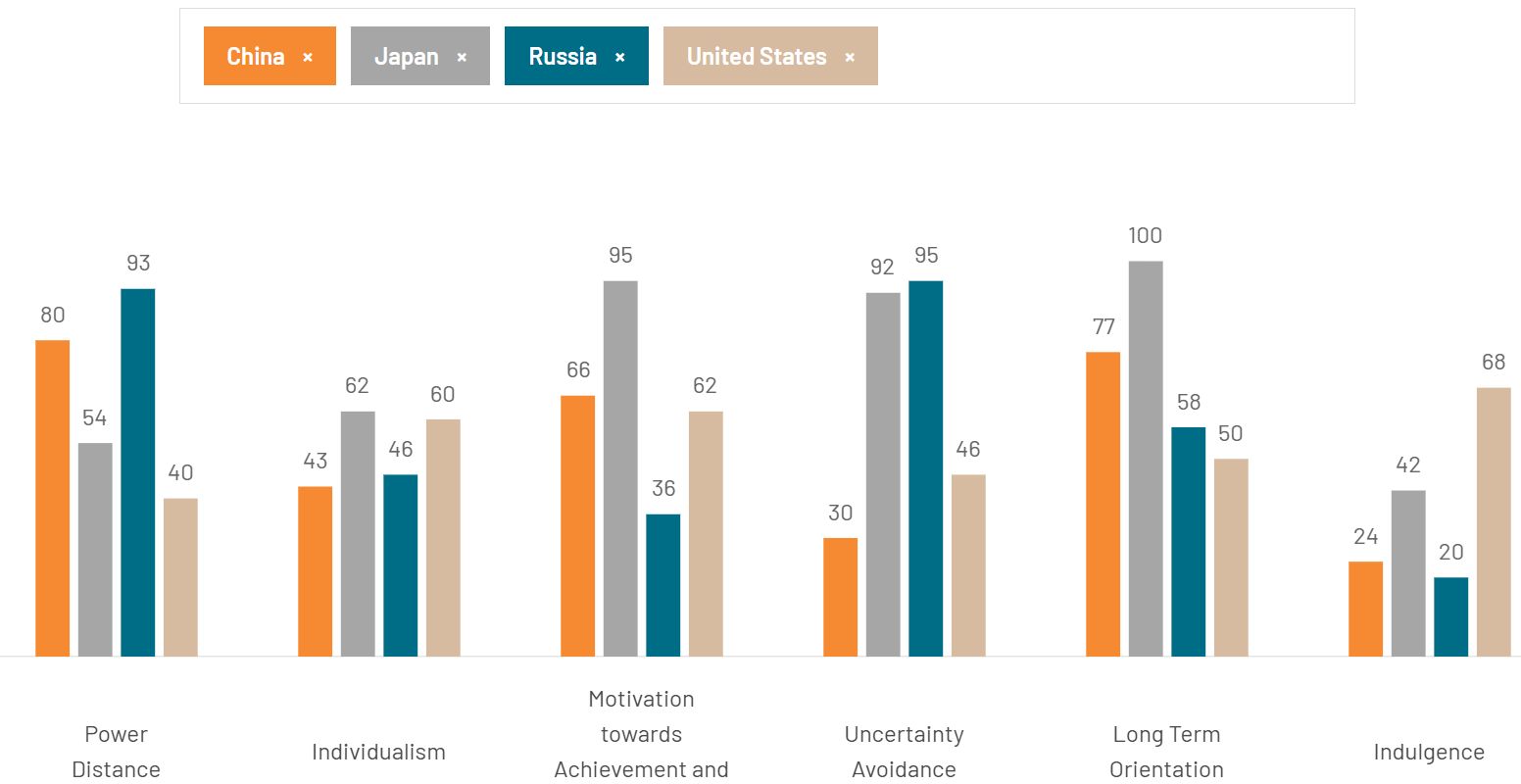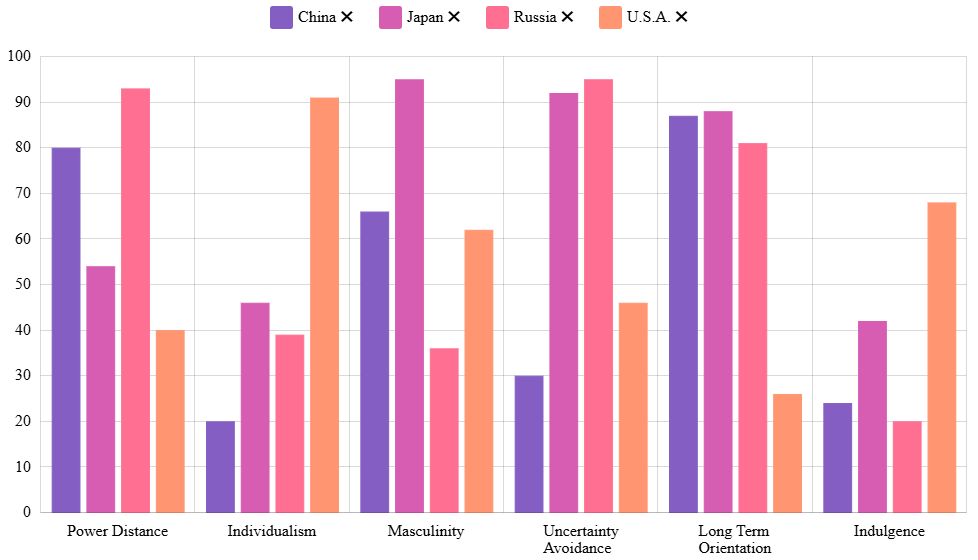The new tool
At https://geerthofstede.com/country-comparison-bar-charts/, anyone can now create bar charts showing country scores on all six Hofstede dimensions of culture. The bar charts show data from the official Hofstede database, as given also in Cultures & Organizations, 3d ed 2010. One can add up to twelve countries. You can either type country names, or click them on Hofstede's Globe.
Usage
In texts that make cross-cultural comparisons between some practice across a number of countries, it is often useful to provide an at-a-glance overview of the cultures of the countries involved. The bar charts are easy to use, allowing to enter country name synonyms even in non-alphabetic scripts. You can find information about all dimensions elsewhere on https://geerthofstede.com.
Scores vs Guesstimates
The Hofstede database does not cover all of the world’s countries, nor do scores for all dimensions necessarily exist for a country. The graphs make this visible. Full bars show official data, while striped ones show Gert Jan’s guesstimates. These guesstimates should be treated with a healthy dose of skepticism.
Culture is never the only thing
Culture data are about countries. They show central tendencies in shared values. You should never use them without also paying attention to more proximate factors of the phenomenon you are analyzing. For instance, what has been the recent history? Who was involved? What other context factors could play a role?
More dimensions together show Gestalt
It is often also helpful to consider the combination of culture dimension scores for understanding a situation. See https://geerthofstede.com/country-comparison-graphs/ for that. You can show two dimensions visually, and a third one by colour.
Why this new tool?
The consulting company itim, our former partner, created an earlier version of this tool. That version, now managed by itim’s successor, the company The Culture Factor (TCF), recently adopted different data behind its graphs. For individualism and long-term orientation they use data from a 2022 study by Minkov and Kaasa (in Journal of International Management 28:4). This leads to some counter-intuitive results. As an example, consider the following graphs in TCF and Hofstede version.

TCF culture dimension bar chart

Hofstede culture dimension bar chart
Notice how the two versions of the bar charts are identical, except for two dimensions: “Individualism” and “Long Term Orientation”. Few observers would rate Japanese culture as more individualistic than US culture, or US culture as similar to Russian on long-term orientation.
What’s in a dimension name?
Some methodological confusion is created by the TCF graphs. Minkov-Kaasa-Individualism is actually a different concept than Hofstede’s Individualism, with different data behind it. As such, it does not fit the other Hofstede model scores. Just because you give something the same name, does not mean it becomes the same thing.
There is discussion about “what individualism really is”. That is a nonsensical question. By definition, such concepts do not “exist” apart from any observer, but they are intersubjective: they exist if they are widely accepted. For that to happen, they have to be useful, and "make sense". So yes, they describe a real society-level phenomenon. Any operationalization of that hypothesized phenomenon is still a human creation though.
The new Minkov-Kaasa dimensions are derived from WVS (World Values Survey) scores in a decent manner and may have their uses, but I believe one should not mix them with the Hofstede dimensions, nor give them the same names.
For Long-term orientation, the issue is less pressing: that dimension‘s scores were already based on WVS data in the 2010 version of the Hofstede model, and differences are not prominent.
This is not about individuals, but countries
One other difference between the two figures is a dimension name. The TCF dimension “Motivation Toward Achievement and Success” is simply a new label for Hofstede’s dimension “Femininity - Masculinity”. I prefer the original, for showing a ubiquitous phenomenon in our sociality. Remember, this is not about individuals being “masculine” or “feminine”, but country cultures.
There is a gender gap in average score on this dimension between males and females, a gap that is bigger in more masculine societies. Culture is part of our biology.
Enjoy!
I hope that the new tool will find many happy users. If you find bugs or errors, please let us know.